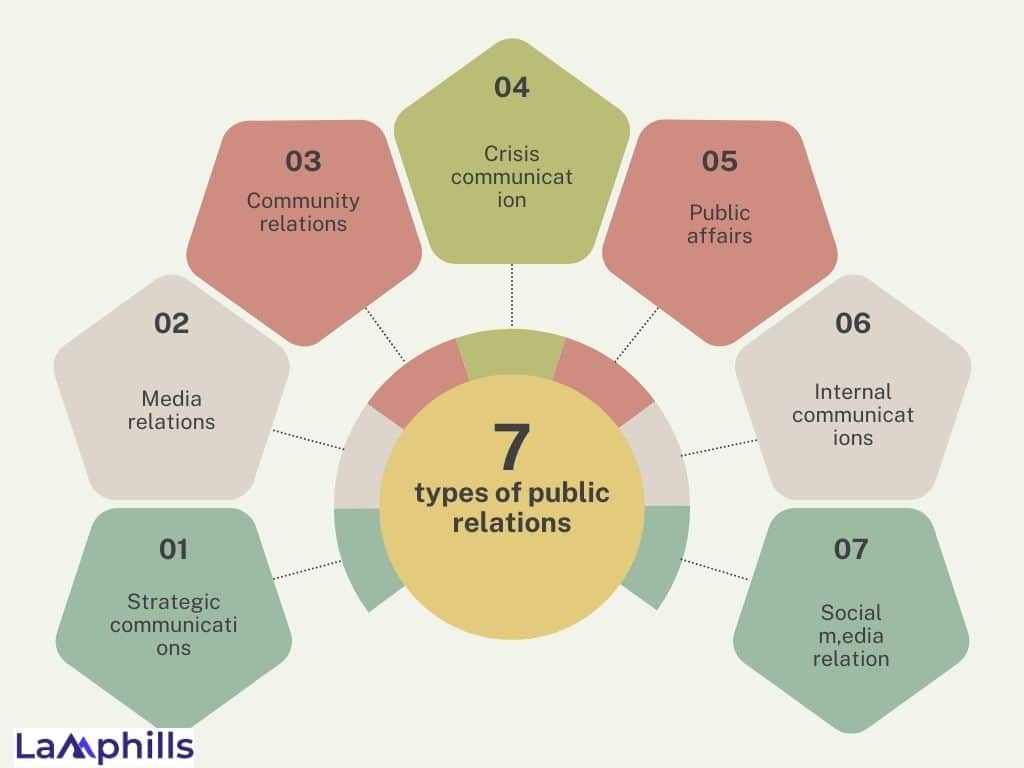With the blazing speed of 2024, not much of the improving PR landscape will attract your attention. With just six PR industry trends that matter this year, cut through the chatter and get ready to change the game. From new trends in how to power AI and virtual events to other game-changing breakthroughs,. Practitioners will stay ahead of the curve and witness tangible results. Let’s dive in and learn more about the future of public relations.
Regarding these essential trends, they are covered in the section below, along with several case studies to illustrate their applicability and significance. Thus, this post only selects six trends from the PR sector. Let me give you a preview of the 6 PR industry trends that actually matter in 2024 to help startups in their task.
Key Points
- Brand decision-making has been greatly influenced by PR, which is predicted to grow significantly in the upcoming years.
- Because they are better at building relationships and earning the confidence of the target audience than celebrity endorsers, micro-influencers have become a well-liked notion. This pattern demonstrates how important the idea of a genuine relationship is in today’s public relations.
- All aspects of crisis management must be properly executed when it comes to news, as they are sensitive to time and trends. According to the above-discussed argument, spokespeople should be ready to act quickly to prevent their organizations from being harmed, and this is by coming out and giving public information.
- Data analysis has changed public relations by providing information that helps with decision-making and campaign performance assessments. This is because the evaluation technique being used here will make the PR efforts more productive as they will be more focused.
Public Relations Industry
The public relations (PR) industry plays a crucial role in shaping and maintaining the image and reputation of organizations, brands, and individuals. It involves managing communications between a company and its various stakeholders, including the media, customers, employees, and the public.
Public Relations personnel work to create and maintain a good public image by creating good messages and campaigns, proper relaying of communication both to the media and the customers, and ahead of thought and preparation for crises or problems that might arise.
The following is a comprehensive dissection of the major parts involved in the public relations profession. Public relations, in its most evident form, is the effective handling of communication and relations with a business’ public and media: the customers, employees, and, in general, the lovable public. The breakdown of divisions in the public relations sector is as follows:.
What is Public Relations?
Public relations are a systemic planned effort for communication management and seeking to gain and maintain a favorable image between an organization and its public. Other things are going in this category: media relations, releasing media, management of social media, planning and management of events, and crisis communication management.
#1. Media Relations
Media relations go hand in hand with public relations; this is the process by which a relationship is built with journalists, editors, and media houses. The media coverage given to an organization raises its visibility and credibility.
#2. Content Creation
What this means in a public relations context is the release of the content or message that the organization needs to pass on to its target markets.
Such content can be a press release, a blog post, an article, a newsletter, or a social media post.
Just the same, such content will necessarily only contain interesting, informative points that align with the objectives and values of the organization.
Read also: Content Syndication: A Comprehensive Guide
#3. Social Media Management
Social media is growing into a crucial PR communication platform.
Today, PR professionals handle online news delivery, follower communication, customer service queries, and overall online reputation management.
To rephrase, PR professionals use social media to share news, engage with followers, handle customer service inquiries, and manage the organization’s online reputation.
#4. Event Planning
Events management and communication are other essential roles of public relations. Events provide an opportunity for interaction and relationships with the stakeholders, although they also provide an opportunity for media publicity. Therefore, PR professionals strategize and execute press conferences, product launches, and community outreach programs.
#5. Crisis Management
Crisis management is a subset of public relations that involves preparing for and making decisions when an unforeseen, undesired adverse event happens. Effectively managing the crisis will reduce damage to the reputation of the organization and will keep the trust of the public.
#6. Strategy Formulation
Strategic planning in public relations ensures that all PR activities align with the organization’s ultimate objectives. It involves a clear definition or establishment of goals, target audience, significant messages, and communication strategy.
#7. Measurement and Evaluation
One of the essential requirements for continuous improvement is to measure and assess the effectiveness of PR activities. PRs are provided with a significant number of metrics and tools to check the impact of their campaigns: media coverage, social media engagement, website traffic, and public sentiment.
Public Relations Industry Trends
Public relations can be rewarding because it is a highly variable industry, requiring strategic thinking that combines creativity and adaptability.
It is, therefore, on this ground that a public relations expert can effectively engage in developing and branding an organization’s image of the public. This can only be done if one masters such elements as content and media relations, social media, event planning, crisis and strategic planning, and measurement. In 2024, staying ahead of industry trends and leveraging new technologies will be key to achieving PR success.
Every day, public relations grows into a new space, driven by the technological revolution and subsequent changes in consumer behavior.
Quite several trends will shape PR landscaping in 2024, and professionals will want to catch up to this. In this section, you will find the six most crucial PR industry trends of this year illustrated with practical examples from real life to see their impact.
#1. Integration of Connectivity with AI and Machine Learning
AI—through the wonders of machine learning—has blown up the PR industry in the direction of better data analysis, the automation of laborious jobs, and the improvement of targeting. PR professionals have become accustomed to deriving insights from large amounts of data and predicting trends to personalize their communications.
Practical Example:
Now, suppose a PR firm that would use AI analysis of real-time sentiment across social media. The firm could grab these trends in its very evolution, changing strategies on the fly. For instance, launching a new product, where AI can follow the real-time reactions to the message points of audiences and make suggestions for the changing message points to get a more positive public response.
#2. Rise of Micro-Influencers
While mega-influencers still hold power, micro-influencers are becoming more valuable in PR strategies, sometimes with a smaller but more engaged follower size. This is because micro-influencers have so much more trust and credibility within members of their community.
Influencer marketing initially operated similarly to traditional celebrity marketing, with the biggest names and most devoted followings receiving the most attention.
Micro- and nano-influencers are becoming more and more popular these days, and with good reason—they can establish closer relationships with their audiences because of how small their audiences are. A micro-influencer’s strong product endorsements come across as recommendations from reliable friends rather than typical advertising.
#3. Crisis Management and Preparedness
There is the most urgent need for crisis management in this era of fast news. There should be preparedness on the part of the public relations managers to respond promptly and appropriately to any potential crisis that would develop—thereby saving their brand’s reputation.
Thus, power relationships are on the rise, and PR has investigated how they relate to a variety of emerging disciplines, as well as how modern advancement contributes to the whole PR experience. Crisis management is built-in public relations, the kind of stuff that only experienced industry professionals can handle.
These tactics are not only proactive, however, but also preemptive, and, in each case, strive to retain confidence alongside crisis management.
See: Crisis Management Plan: Steps To Crafting The Best Crisis Management Plan (+ Free Templates)
Practical Example
A food company recalls its products due to contamination; this is one scenario with serious adverse effects.
The PR team issues a press release immediately, accepting some of the faults and explaining the course it is taking for corrective measures while also apologizing and compensating the affected customers.
Other than that, news is given regularly on social media and through press releases to the media to make the public aware.
#4. Increase in Data Analytics
Data analytics is increasingly becoming one of the critical ways the PR industry will answer new challenges. The possibilities of measuring campaign undertakings and understanding human behavior in making good decisions have become a reality in the PR industry.
We are already seeing how the industry is gradually moving towards a more analytical approach, especially with the help of new software products that work with data analysis.
The lack of particular details points to areas for improvement in the data-working process. Create an atmosphere in which data is properly obtained, changed as needed, and consistently monitored, evaluated, and used.
With this in mind, the PR industry will enable its clients to get more insight into their target customers to ensure more effective communication.
I believe that, more often than not, a more relevant and tailored message directed at the audience can be quite beneficial and have an impact on the specific brand in question. However, data analytics and the processes that support such an environment should be monitored.
Example
Netflix uses data analytics to predict viewer preferences and customize content to suit those needs. They rely on the framework under which a particular promotion or announcement is prepared through insights derived from viewer data. This implies that it is laid out to suit the audience, hence drawing more engagements and higher subscription rates.
#5. Going Deeper into Digital and Social Media PR
Today, digital and social media almost rule the communication landscape, providing public relations professionals a way to reach mass audiences in bulk and target consumers directly.
For the year 2024, such popular social networks as Twitter and LinkedIn will remain relevant. As will TikTok. For example, these platforms could be effective for sharing thought leadership content and building the media or customer base.
Those public relations strategies that have previously relied on their coverage in traditional tier 1 media outlets like the Financial Times or the Wall Street Journal will begin to view social media outlets as useful support weapons. Communications specialists, equipped to manage both media and social media, will gradually facilitate this change.
Related: WHAT ARE THE DIFFERENCES BETWEEN SOCIAL LISTENING & MONITORING?
Example
Social media is not merely a PR tool for Nike but also a viral platform, where most campaigns go viral due to an innovative and engaging approach in using platforms like Twitter, Instagram, and YouTube. The best case in point is the “Dream Crazy” campaign with Colin Kaepernick, which triggered the actual explosion from within and began negotiations on both sides.
#6. The Need to Upskill
No one in the PR industry should be rigid about trends; they must stay updated on information systems and technology.
This way, you will be in a position to utilize them fully and exercise care so that you do not end up being inferior to your competitors. It is now customary to use data analytics for campaign and activity results across all channels of media; knowledge about digital analytics and skills in these areas would therefore come in handy.
Put another way, recently, I thought of a few ways that PR professionals can keep up with new updates as members of the Public Relations Society of America (PRSA) or as practitioners of PR. The following are some activities that the author advises public relations practitioners to undertake: They must attempt to learn new skills. A public relations professional may suffer from not studying because this is a career that is constantly changing. Learning is a vital, lifelong endeavor.
Okay, that concludes the matter! Since there is a sudden increase in these trends, I believe they are the most important ones that should be investigated. Nevertheless, don’t worry—I’ve got you covered if you need any more PR trends for 2024!
Here is a PDF checklist of PR Industry Trends That Actually Matter in 2024, designed to be visually appealing with checkboxes for easy tracking. The checklist includes several significant trends to help PR professionals stay ahead of the curve.
Click the link button below to download the checklist:
How big is the public relations industry?
The global PR market is intensely significant, and it is estimated that the PR market is worth billions of dollars. Based on conducted in 2023, the PR market demand worldwide will exceed 107.83 billion U.S. dollars, assuming a compound annual growth rate (CAGR) of approximately six percent in the subsequent four years.
What is PR in the service industry?
Public relations is a corporate function and administrative tool that helps an organization and its target groups develop mutual communication, understanding, acceptance, trust, and cooperation, and then maintains this environment.
What is the field of public relations?
Public relations is the profession of influencing and being responsible for maintaining the perception that a certain company or an individual has among the public, especially its consumers, shareholders, staff, and overall society.
PR professionals must develop strategies that build, maintain, and deepen trusting relationships, manage crises effectively, increase brand recognition, and uphold a positive reputation for their organization or client.
They employ media relations, therefore, they write press releases, create content, use social media platforms, conduct community relations, and organize events to target the intended audience, thus helping achieve business goals and objectives.
What are the 7 types of public relations?

There are 7 different types of PR:
- Strategic communications.
- Media relations.
- Community relations.
- Internal communications.
- Crisis communications.
- Public Affairs.
- Online and social media communications.
What do PR professionals do?
A professional in public relations (PR) is responsible for managing the perception that the public has concerning the image of the client, the branding process, and other issues that may cause a negative image of the client. Some of the tasks that they achieve include reporting to the media, developing messages, planning for events, and selling products or services; all of this is wrapped up with the concern of perceptions.
Passionate about uncovering stories? Always striving to be ahead of the news? Love the media? Samantha shares what being a PR officer is like…
Watch the video below!
“Navigating the Future of PR: Why Staying Ahead of the Curve Matters”
The six key trends shaping the PR industry in 2024 include the integration of AI and machine learning in the premium of authentic storytelling, the rise of micro-influencers, focus on crisis management, advanced data analytics, and expanding digital and social media PR. It’s what will enable today’s publicists to make their way through that fluid, ever-changing landscape, connecting to the target audience and driving meaningful results for their brands.
Related Posts
- Top PR Tracking Tools of 2024: Navigating the PR Landscape
- The Best Tools for A PR Professional: Elevate Your PR Strategy
- PR KPIs: Top 10 PR KPIs Every Comms Pro Needs to Track in 2024
- PR Business Meaning & How to Start!!! (Detailed Guide)
- How to Create a PR Team for Your Business
- Landing Your First PR Job: A Step-by-Step Guide
- Everything You Should Know About Sports PR (+ Insights)






